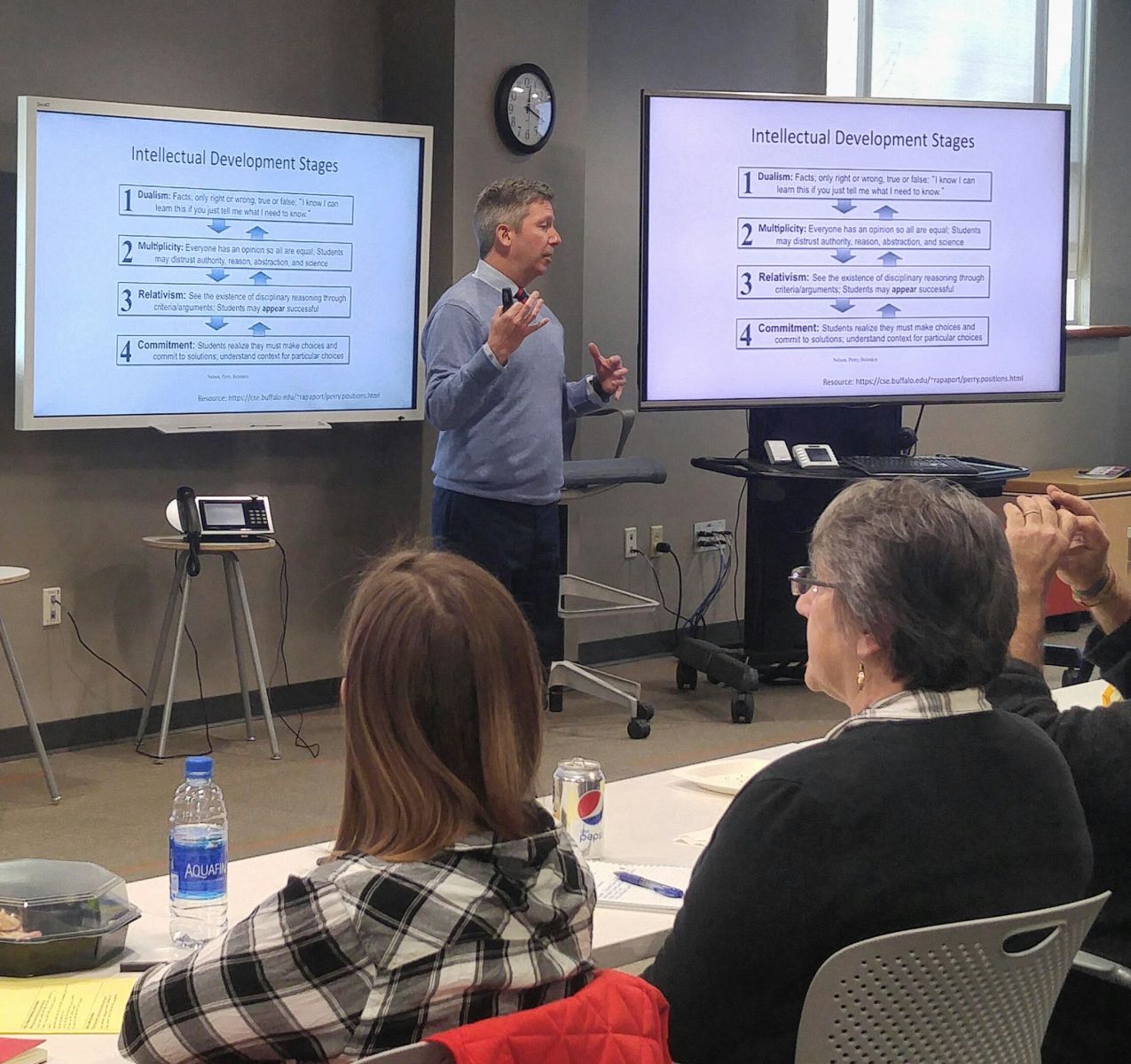By Jennifer Hoyt

William & Mary’s Associate Professor Jim Barber set the tone for the University Teaching Project’s (UTP) spring series as the first of several guests in line to support the significance of teaching and learning. On January 30th, over lunch and conversation, a crowd of educators joined the workshop to take full advantage of the opportunity to realize a long-awaited academic goal: to share their experiences with other educators.
“I think the time and space to talk about teaching and learning with other people who find it valuable is an absolute luxury,” shares Barber, a tenured faculty member from the School of Education. He acknowledges, “It’s a rare opportunity that we get to talk about these things and really dig in.”
Barber refers to the fundamentals of course design, specifically that of the COLL curriculum at William & Mary. Yet, he ties the art of instruction and student engagement to all disciplines under the overarching umbrella of integrated learning. Barber points out that the practice of integration in the classroom is essential for students as they move forward on their professional and personal journeys following graduation. “They’re going to have to be able to take information, knowledge, and skills that they’ve learned here at William & Mary and use those in other contexts,” he says.
However, the associate professor also recognizes that faculty at higher education levels never receive the training necessary to actually teach students. “Faculty are learners too,” he shares. Unlike faculty working in the K-12 field, college educators offer expertise in their academic discipline without any previous practice of developing lessons or managing diverse classroom settings, which can make integrated learning more challenging to add to course syllabi.
Barber offers six guidelines, like knowing your audience and establishing a personal connection with student interests, to overcome the obstacles of higher education instruction. And similar to the practice of William & Mary’s COLL curriculum, he encourages those attending to build more time into their course design for student reflection and the sharing of student experiences to strengthen the outcome of teaching and learning. “The COLL curriculum is integrative by nature. It is designed to reach out to different disciplines and to different areas,” Barber explains. “The core of our curriculum at William & Mary is integrative by design.”
As the first UTP workshop wrapped up, Barber was met with feedback from his peers and words of gratitude for his time, particularly from William & Mary Executive Professor and planner of UTP’s spring series Gene Roche. “Jim’s presentation was a really good balance of theory and practice,” Roche reflects. “Even after 35 years of teaching, there were several ideas that were new to me.”
Ben Boone, Associate Director of the Center for Liberal Arts, also shared his appreciation for the workshop. “I’m excited by the fact that Gene has started with Jim because I think that it shows a cross-school collaboration,” he says. “It also shows how COLL curricular stuff bleeds out beyond the COLL curriculum, and I think it shows how we can have this dialogue across positions, not just schools.”

